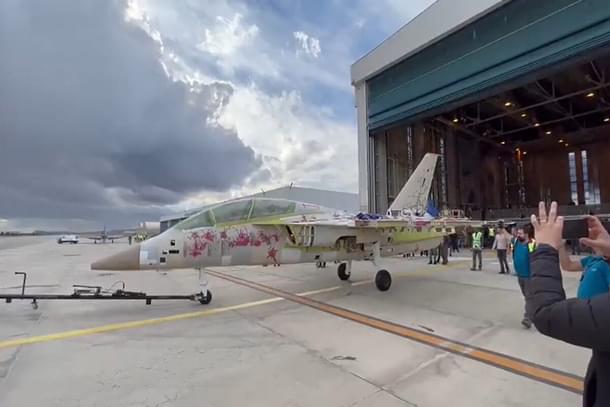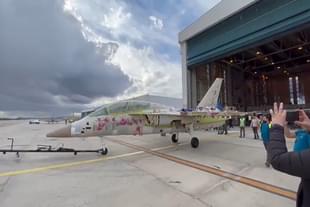Defence
Hurjet: Yet Another Turkish Defence Program Takes Off As Indian Ambitions Remain Stalled By Tussle Between Forces, PSUs
Ujjwal Shrotryia
Apr 25, 2023, 06:40 PM | Updated Apr 26, 2023, 08:52 AM IST
Save & read from anywhere!
Bookmark stories for easy access on any device or the Swarajya app.


In a major milestone for the Turkish aerospace industry, the Hurjet trainer aircraft, made by Turkish Aerospace Industries (TAI), conducted its first flight on 25 April. The Turkish Air Force is expected to use the Hurjet to replace its American Northrop T-38 Talon trainer aircraft in its inventory. TAI started developing Hurjet in late 2017, and the first model was displayed at the Farnborough International Airshow in 2018.
According to the Turkish news website SavunmaSanayiST.com, the Hurjet flew to an altitude of 14,000ft and reached a maximum speed of 250 knots during its 26-minute flight. It is a supersonic aircraft with a maximum speed of over 1.3 mach. It is a single-engine twin-seat trainer aircraft that uses American General Electric F404 engines. In addition to training, the Hurjet is also capable of conducting close-air support operations.
The Hurjet features an advanced cockpit that can integrate various next-generation bombs and missiles. Earlier in March, the Hurjet completed its taxi trials. This flight comes a month after the Turkish fifth-generation TF-X fighter jet completed its first set of taxi trials on March 17.
It is noteworthy that the Turkish aerospace industry has developed prototypes of three different stealth programs in a short span of three years: the TAI TF-X, Anka-3 Stealth UCAV, and Kizilelma.
The Kizilelma completed its first flight in December 2022, while the ANKA-3 broke cover on March 19 of this year.
In comparison, the Indian aviation industry is struggling to secure development funds from the government.
Only in September 2022 did the Indian government approve Rs 10,000 crore for the development of four prototypes of Tejas MK-2. The release of funds for the development of a prototype of the fifth-generation fighter Advanced Medium Combat Aircraft (AMCA) is still pending.
Moreover, there is a tussle between the Indian Armed Forces and the various public sector undertakings (PSUs), where the Armed Forces blame the PSUs for their inefficiency and lack of innovation, while the PSUs have blamed the Armed Forces for constantly changing the specifications.
The Indian industry also had to develop most sub-systems and components from scratch to reduce dependence on foreign suppliers, which has resulted in delays.
On the other hand, the Turkish aviation industry has received significant help from the Western military-industrial complex.
Various Turkish industries were partners in the F-16 supply chain, and Turkey was an industrial partner for the F-35 stealth program until it was removed from the program after Turkey bought S-400 surface-to-air missile systems from Russia.
Staff Writer at Swarajya. Writes on Indian Military and Defence.





